Blog
29 Ways to Lose Weight Naturally Easy Method Tricks
Many natural methods exist to aid weight loss. Among these are consuming fewer processed foods, increasing green tea intake, and incorporating probiotics into your diet. Developing consistent exercise and sleep patterns can also contribute positively. There are numerous approaches to reduce weight, ranging from minor dietary adjustments to enlisting additional help. Losing weight will increase your energy and lower your risk of obesity, heart disease, and type 2 diabetes if you are overweight. In this post, we’ll talk about 29 ways to lose weight naturally easy method tricks that are simple to follow and will help you achieve the desired gorgeous appearance.
29 Ways to Lose Weight Naturally Easy Method Tricks
Online weight loss advice often lacks credibility, with many recommendations being unsubstantiated by scientific research. Yet, credible natural approaches do exist and have demonstrated efficacy. Here’s a guide to implementing these 29 ways to lose weight naturally easy method tricks for successful weight loss.
1. Increase your intake of protein.
Introducing more protein into your diet holds significant importance in the realm of weight loss. The digestion and metabolism of protein lead to calorie expenditure, potentially increasing metabolism by a significant 80–100 calories daily.
Moreover, a diet rich in protein has the added benefit of inducing a greater feeling of fullness and reducing overall appetite. Studies indicate that individuals on a high-protein diet tend to consume around 400 fewer calories each day.
2. Choose complete, one-ingredient meals
Even a straightforward adjustment like opting for a high-protein breakfast, such as eggs, can yield a considerable impact. Focusing on whole, unprocessed foods stands out as a key strategy in improving overall health.
This approach significantly reduces intake of added sugar, fat, and processed items.
Whole foods tend to be inherently satiating, aiding in adhering to reasonable calorie consumption. Additionally, these foods offer a wealth of essential nutrients vital for proper bodily function.
Weight loss commonly occurs as a natural consequence of embracing a diet rich in whole foods.
3. Limit on processed foods:
Processed foods typically contain elevated levels of added sugars, fats, and calories.
Moreover, these items are designed to encourage heightened consumption, often leading to tendencies resembling addictive eating behaviors more than their unprocessed counterparts .
4. Stock up on nutritious foods and snacks:
Research indicates that the selection of foods stocked at home significantly influences both weight management and eating habits.
Maintaining a supply of nutrient-rich options minimizes the likelihood of consuming less healthy alternatives for yourself or your household.
Furthermore, numerous easily portable and nutritious snack choices exist, such as yogurt, whole fruits, nuts, carrots, and hard-boiled eggs. These items are convenient for on-the-go consumption.
5. Eat less added sugar:
Consuming excessive amounts of added sugar has strong links to prevalent global diseases like heart disease, type 2 diabetes, and cancer.
On average, Americans consume approximately 15 teaspoons of added sugar daily, mostly hidden within processed foods, resulting in an unwittingly elevated sugar intake.
Identifying the true sugar content in products poses challenges due to the array of names sugar can appear as on ingredient lists.
Decreasing added sugar consumption notably improves overall health and elevates the quality of one’s diet.
6. Ever considered water as a weight loss ally?
Research supports the idea that consuming 0.5 liters (17 oz) of water could potentially boost calorie burning by 24–30% for an hour afterward.
Drinking water prior to meals might also result in decreased calorie consumption, especially among middle-aged and older individuals.
For effective weight loss, choosing water over high-calorie and sugary beverages proves to be particularly beneficial.
7. Drink coffee (without sugar)
Coffee brims with antioxidants and other advantageous compounds.
The consumption of coffee might aid weight loss by elevating energy levels and enhancing calorie expenditure.
Caffeinated coffee has the potential to increase metabolism by 3–11% and remarkably decrease the risk of developing type 2 diabetes by 23–50%.
Moreover, black coffee proves weight loss-friendly as it induces a feeling of fullness while containing minimal calories.
8. Add glucomannan as a supplement:
Consider supplementing with glucomannan, a scientifically proven weight loss aid. This natural, water-soluble dietary fiber originates from the konjac plant’s roots, also referred to as the elephant yam.
Glucomannan is notably low in calories, expands in the stomach, and delays the process of stomach emptying. Additionally, it diminishes protein and fat absorption while nurturing beneficial gut bacteria.
Its remarkable water-absorbing capacity is believed to be the key to its effectiveness in weight loss. A single capsule has the ability to transform an entire glass of water into a gel-like substance.
9. Go low on liquid calories:
Liquid calories predominantly stem from beverages such as sugary sodas, fruit juices, chocolate milk, and energy drinks.
These beverages pose various health risks, notably increasing the likelihood of obesity. For instance, a study indicated a substantial 60% rise in childhood obesity risk with each daily serving of a sugar-sweetened beverage.
Furthermore, it’s essential to recognize that the brain doesn’t process liquid calories in the same manner as solid ones, leading to the addition of these calories atop your regular dietary intake.
10. Reduce your consumption of processed carbohydrates:
Refined carbs, devoid of many beneficial nutrients and fiber, result from a process that strips them down to easily digestible forms, potentially elevating the risk of overeating and health issues.
Common culprits of refined carbs in diets encompass white flour, white bread, white rice, sugary beverages, pastries, snacks, confections, pasta, breakfast cereals, and added sugars.
11. Intermittently Fast:
Intermittent fasting involves alternating between periods of fasting and eating in a structured pattern.
Various approaches exist, such as the 5:2 diet, the 16:8 method, and the eat-stop-eat method.
Typically, these methods result in a reduction in overall calorie intake without the need for active calorie restriction during eating periods. This approach often leads to weight loss and a range of additional health benefits.
12. Drink green tea (unsweetened):
Consider consuming (unsweetened) green tea as a natural beverage abundant in antioxidants. Its consumption is associated with numerous advantages, including heightened fat burning and potential weight loss.
Green tea has been shown to potentially elevate energy expenditure by 4% and enhance targeted fat burning, particularly focusing on detrimental abdominal fat by up to 17%.
Additionally, matcha tea, a powdered variation of green tea, may offer even more robust health benefits compared to regular green tea.
13. Consuming More Fruits and Vegetables
Incorporating more fruits and vegetables into your diet offers a wealth of nutrition and supports weight loss efforts.
These foods boast high water content, essential nutrients, and fiber, while maintaining a low energy density. This allows for substantial portions without excessive calorie intake.
Multiple studies indicate that individuals with higher fruit and vegetable consumption tend to have a lower weight.

14. Periodically count the calories:
Maintaining awareness of your dietary intake proves advantageous in weight loss endeavors.
Effective methods to achieve this include calorie counting, maintaining a food diary, or capturing images of your meals.
Utilizing an app or other electronic tools might offer greater benefits compared to traditional food journaling.
15. Uses small plates:
Using smaller plates has been demonstrated in studies to contribute to consuming less, primarily by altering perceptions of portion sizes.
Interestingly, individuals tend to fill their plates regardless of the plate’s size, resulting in larger portions on bigger plates compared to smaller ones .
Opting for smaller plates not only reduces food intake but also creates the illusion of having consumed more.
16. Try low-carb diet:
Numerous studies support the efficacy of low-carb diets in facilitating weight loss.
Restricting carbohydrates while increasing fat and protein intake has shown to suppress appetite, aiding in the reduction of overall calorie consumption.
The resulting weight loss can be up to three times higher compared to adhering to a standard low-fat diet.
Moreover, following a low-carb diet can positively impact various risk factors associated with disease.
17. Eat a Little Bit Slower:
Eating too quickly can lead to consuming excess calories before your body registers fullness.
Fast eaters face a higher likelihood of developing obesity compared to individuals who adopt a slower eating pace.
Chewing food more slowly might aid in reducing calorie intake and stimulate the production of hormones associated with weight loss.
18. Including eggs in your diet:
Incorporating eggs into your diet can significantly aid in weight loss. They stand as an exceptional food choice—low in calories, high in protein, and rich in diverse nutrients.
Research indicates that high-protein foods contribute to reduced appetite and increased satiety compared to those with lower protein content.
Moreover, opting for eggs at breakfast might result in up to 65% more weight loss over 8 weeks compared to consuming bagels. This choice could also potentially lead to reduced calorie intake throughout the rest of the day.
19. Uses Spices in Your Food:
Introducing chili peppers and jalapeños into your meals can offer the benefits of capsaicin, a compound believed to potentially elevate metabolism and enhance fat burning.
Furthermore, capsaicin might aid in curbing appetite and reducing overall calorie intake.
20. Use Probiotics:
Incorporating probiotics, live bacteria with beneficial health effects when consumed, can significantly enhance digestive and heart health while potentially aiding in weight management.
Research suggests a correlation between gut bacteria differences in individuals with overweight or obesity compared to those with average weight, indicating a potential influence on body weight .
Probiotics contribute to maintaining a healthy gut flora, potentially hindering dietary fat absorption, curbing appetite, and reducing inflammation.
Among various probiotic bacteria, Lactobacillus gasseri demonstrates particularly promising effects on weight loss.
21. Need More Sleep:
Adequate sleep plays a vital role in weight management and preventing potential weight gain.
Research reveals that individuals with insufficient sleep have up to a 55% higher risk of developing obesity compared to those with adequate sleep, and this risk escalates further in children.
This link is attributed in part to sleep deprivation disrupting the regular fluctuations in appetite hormones, which in turn impairs proper appetite regulation.
22. Should Eat more fiber:
Incorporating fiber-rich foods into your diet can aid in weight loss, particularly those containing water-soluble fiber, known for enhancing the sensation of fullness.
Water-soluble fiber may contribute to delaying stomach emptying, expanding the stomach, and triggering the release of satiety hormones.This mechanism can assist in reducing calorie intake without conscious effort.
Various types of fiber support the growth of beneficial gut bacteria. These healthy gut bacteria are associated with a decreased risk of obesity.
Gradually increasing fiber intake is advisable to prevent discomfort like bloating, cramps, or diarrhea.
23. After eating, brush your teeth:
Following meals, individuals commonly engage in brushing, flossing, or using mouthwash for dental care.
These oral hygiene practices can momentarily alter the taste of foods and drinks, potentially reducing the urge to snack or indulge between meals.
24. Should Work to overcome food addiction:
Overcoming food addiction involves grappling with intense cravings and shifts in brain chemistry that heighten the challenge of resisting specific foods.
For many individuals, this becomes a leading factor behind overeating, impacting a significant portion of the population. A 2014 study highlighted that nearly 20% of individuals met the criteria for food addiction.
Certain foods tend to trigger addictive behaviors more than others, particularly highly processed junk foods rich in sugar, fat, or both.
Seeking guidance from a healthcare professional can be beneficial in addressing food addiction.
25. Do some kind of cardio:
Engaging in various forms of cardio exercise such as jogging, running, cycling, brisk walking, or hiking provides an excellent means to burn calories while enhancing both mental and physical well-being.
Studies reveal that cardio exercises improve several heart disease risk factors and contribute to weight reduction.
Notably, cardio exercises demonstrate effectiveness in diminishing visceral fat accumulation around organs, a factor linked to metabolic ailments.

26. Should Add Resistance Exercises:
When dieting, a common consequence is the decline in muscle mass. This decrease can lead to a reduction in calorie expenditure.
Incorporating resistance exercises, such as weightlifting, into your routine can mitigate this muscle loss.
27. Use whey protein:
While most individuals acquire sufficient protein through their diets, some may find supplementing with whey protein beneficial for increasing protein intake.
Research indicates that substituting a portion of your calories with whey protein can result in notable weight loss and simultaneous gains in lean muscle mass.
It’s essential to scrutinize the ingredients list, as certain whey protein varieties may contain excessive sugar and other additives.
28. Engage in mindful eating techniques:
Mindful eating involves cultivating awareness during meals, promoting conscious food decisions, and tuning into your body’s hunger and fullness signals.
This approach enables individuals to respond appropriately to these cues, influencing weight management, eating habits, and stress levels, particularly in individuals dealing with obesity. It’s notably effective in curbing binge and emotional eating tendencies.
By embracing mindful food choices, heightening awareness, and attuning to your body’s signals, weight loss becomes a natural outcome.
29. Try To Change Your Lifestyle:
Shift your focus towards lifestyle changes. Long-term success often eludes traditional diets, with individuals typically experiencing weight regain over time. Emphasize nourishing your body with wholesome foods and incorporating daily physical activity as primary goals, rather than solely aiming for weight loss.
Blog
Mounjaro Price in Pakistan
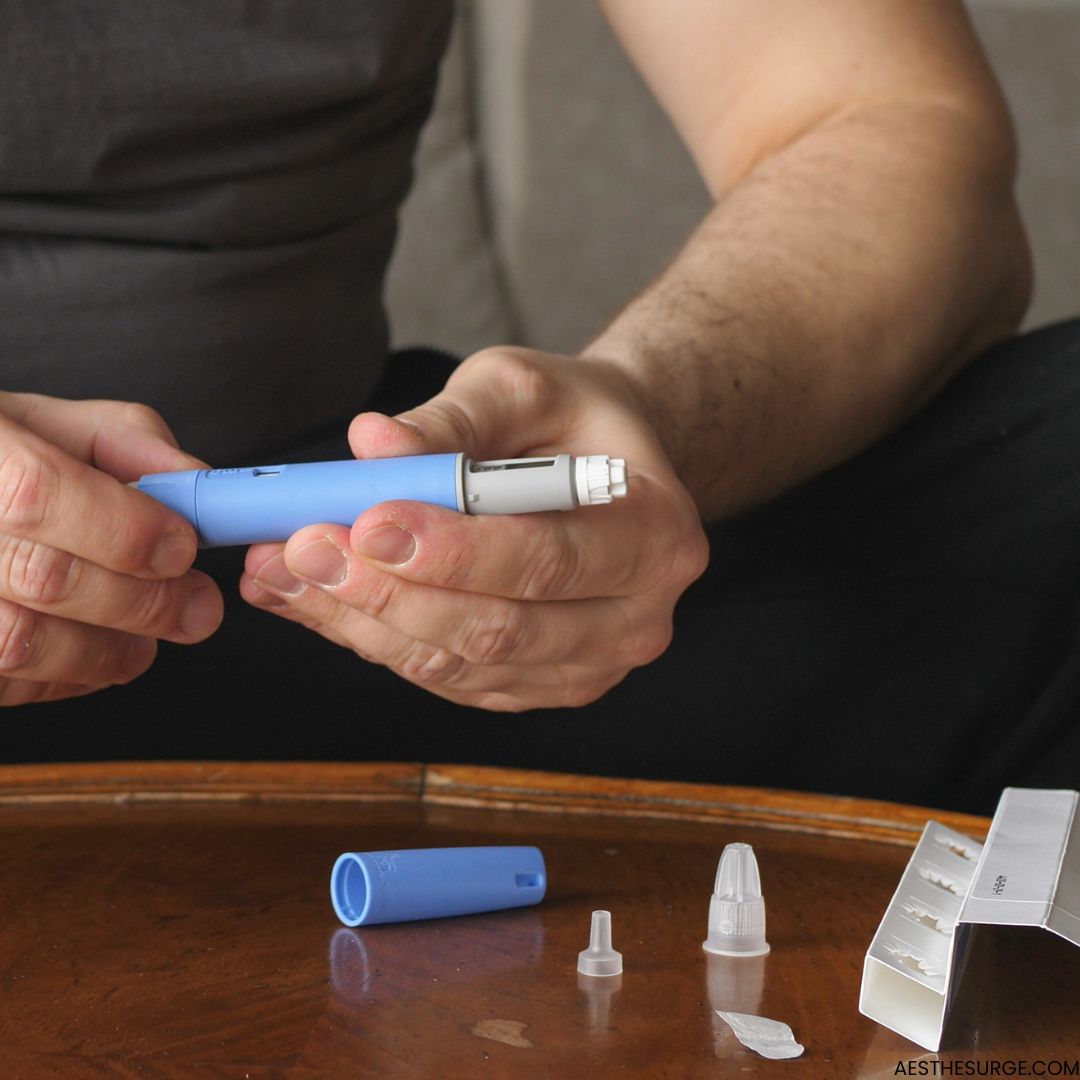
Introduction: Why Mounjaro is the Talk of the Town in Pakistan
In recent years, weight management and diabetes treatment have seen revolutionary advancements worldwide. One name that has gained massive attention both internationally and now in Pakistan is Mounjaro (Tirzepatide). Originally approved by the FDA for the treatment of type 2 diabetes, Mounjaro quickly became popular for its unparalleled weight loss results. Patients who previously struggled with obesity or poor metabolic control are now turning to Mounjaro as a life-changing solution.
But with this growing demand comes a very common question: What is the Mounjaro injection price in Pakistan, and where can you get it safely?
This detailed guide will cover everything you need to know about Mounjaro’s cost, benefits, availability, side effects, and comparison with other weight loss injections like Saxenda, Ozempic, and Wegovy. By the end, you’ll also learn why it is strongly recommended to get Mounjaro treatment at Aesthedoc Clinic Islamabad and Aesthesurge Clinic Rawalpindi — two of the leading names in medical aesthetics and weight loss management in Pakistan.
Mounjaro Price in Pakistan
The price of Mounjaro in Pakistan varies depending on the dosage strength, availability, and whether you are purchasing it directly from a pharmacy or receiving it under the supervision of a certified clinic.
- On average, the Mounjaro injection price in Pakistan ranges from PKR 90,000 to PKR 150,000 per pen depending on the milligram dosage and supply chain.
- Some online pharmacies claim to offer cheaper options, but patients are strongly advised to avoid unverified sellers, as counterfeit or expired products are a serious risk in Pakistan’s market.
- At Aesthedoc Clinic Islamabad and Aesthesurge Clinic Rawalpindi, Mounjaro treatment is provided under professional guidance, ensuring safe storage, correct dosage, and medically supervised administration.
💡 Pro tip for patients: Always remember that while the price matters, your safety and results depend on choosing a clinic that specializes in weight loss injections.
How Does Mounjaro Work?
Mounjaro contains Tirzepatide, a first-of-its-kind medication that works as a dual GIP and GLP-1 receptor agonist. Unlike traditional diabetes or weight loss medications that target just one pathway, Mounjaro works on two powerful mechanisms:
- Regulating blood sugar – improving insulin sensitivity and lowering glucose levels.
- Suppressing appetite & slowing digestion – making you feel full for longer, reducing calorie intake naturally.
This unique mechanism makes Mounjaro far more effective for weight reduction compared to alternatives like Saxenda or Ozempic.
Benefits of Mounjaro for Weight Loss & Diabetes
Mounjaro has been hailed as a game-changer because of its wide range of benefits:
- Rapid weight loss results – many patients lose up to 15–20% of their body weight over several months.
- Better diabetes management – improved blood sugar control for type 2 diabetic patients.
- Reduced appetite & cravings – making diet control easier.
- Long-term sustainability – patients often find weight loss easier to maintain.
- Boosted energy & confidence – thanks to a healthier metabolism.
For patients in Pakistan, this means a real solution to weight issues that were once only manageable through surgery or extreme dieting.
Mounjaro vs Saxenda vs Ozempic vs Wegovy
When searching for weight loss injections in Pakistan, you will come across multiple options. Here’s how Mounjaro compares:
| Injection | Active Ingredient | Avg. Price in Pakistan | Effectiveness for Weight Loss | Availability |
|---|---|---|---|---|
| Mounjaro | Tirzepatide | PKR 45,000 – 70,000 | ★★★★★ (Up to 20% body weight reduction) | Limited, available at top clinics |
| Saxenda | Liraglutide | PKR 25,000 – 35,000 | ★★★ (8–10% body weight reduction) | Widely available in pharmacies |
| Ozempic | Semaglutide | PKR 35,000 – 50,000 | ★★★★ (12–15% body weight reduction) | Available but often in shortage |
| Wegovy | Semaglutide (higher dose) | PKR 45,000 – 65,000 | ★★★★★ (Similar to Mounjaro, but higher cost) | Not widely available in Pakistan yet |
👉 As seen above, Mounjaro leads the race in terms of both effectiveness and popularity. While Saxenda and Ozempic remain strong alternatives, Mounjaro’s unique dual-action mechanism offers unmatched weight loss results.
Possible Side Effects of Mounjaro
Like any medication, Mounjaro may cause side effects, especially in the beginning. Common but usually mild symptoms include:
- Nausea
- Vomiting
- Diarrhea
- Decreased appetite
- Fatigue
Most of these symptoms improve as the body adjusts to the medication. However, this is exactly why professional supervision at a clinic is important. Self-injecting without medical guidance can increase risks.
Why You Should Choose a Clinic Instead of Self-Use
While some patients try to buy Mounjaro online or from unverified pharmacies, the risks are high:
- Fake or expired injections
- Incorrect dosage leading to complications
- No medical monitoring for side effects
- Poor storage (insulin-based injections require strict refrigeration)
At Aesthedoc Clinic Islamabad and Aesthesurge Clinic Rawalpindi, patients benefit from:
✅ Certified doctors & aesthetic physicians
✅ Proper dosage guidance
✅ Safe injection administration
✅ Regular progress monitoring
✅ Customized weight loss programs
FAQs on Mounjaro Price & Usage in Pakistan
1. What is the current Mounjaro price in Pakistan?
The average cost ranges between PKR 45,000 – 70,000 per pen, depending on the dosage.
2. Is Mounjaro better than Saxenda or Ozempic?
Yes, studies show Mounjaro offers more significant weight loss results than both Saxenda and Ozempic.
3. Can I buy Mounjaro without a prescription in Pakistan?
It is strongly advised to use Mounjaro under medical supervision only, as it requires proper dosage and monitoring.
4. How long before I see results?
Most patients notice weight loss within 4–6 weeks, with significant results over 3–6 months.
5. Where can I get Mounjaro injections in Islamabad and Rawalpindi?
You can safely receive treatment at Aesthedoc Clinic Islamabad or Aesthesurge Clinic Rawalpindi, where certified experts administer the injections.
Final Thoughts: Transform Your Weight Loss Journey with Mounjaro
Mounjaro is not just another weight loss trend — it is a scientifically proven, FDA-approved solution that has changed the lives of thousands worldwide. In Pakistan, it is now available for patients who are serious about taking control of their weight and health.
While the Mounjaro price in Pakistan may seem high compared to alternatives, the results, safety, and life-changing impact make it worth every rupee.
💡 If you’re ready to begin your journey, book your consultation today at:
👉 Aesthedoc Clinic Islamabad
👉 Aesthesurge Clinic Rawalpindi
Take the first step toward a healthier, more confident you.
Blog
Face Lift Treatment Options
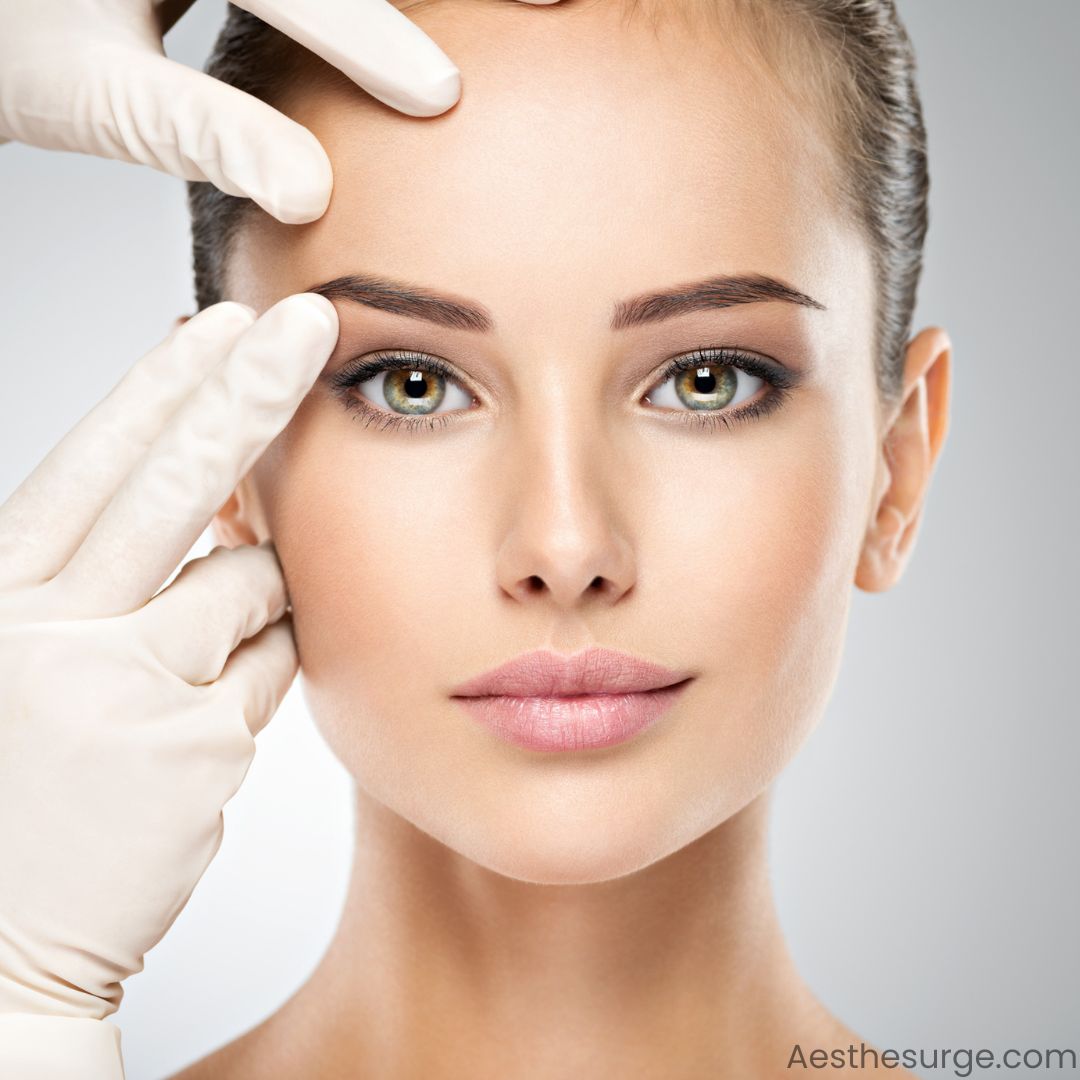
As individuals age, visible signs such as wrinkles, sagging skin, and facial volume loss begin to appear. A face lift is a proven aesthetic procedure designed to address these concerns, restoring a youthful, refreshed appearance. Whether you’re noticing fine lines around the mouth or deeper folds near the cheeks and jawline, modern face lift options offer both non-surgical and surgical solutions tailored to your unique needs.
What Is a Face Lift?
A face lift, also known as rhytidectomy, is a cosmetic treatment aimed at reducing visible signs of aging in the face and neck. This procedure targets sagging skin, deep creases, jowls, and loose skin on the neck, providing a tighter and more contoured look.
Types of Face Lift Treatments Available
1. Non-Surgical Face Lift Treatments
Non-invasive techniques are becoming increasingly popular for individuals looking for minimal downtime and subtle yet noticeable results.
- HIFU (High-Intensity Focused Ultrasound)
This non-invasive treatment uses ultrasound energy to stimulate collagen production and tighten skin naturally, often referred to as a “lunchtime lift.” - Thread Lift
A procedure involving dissolvable threads placed under the skin to lift and tighten sagging areas. It stimulates collagen while providing immediate elevation. - Dermal Fillers & Botox
While not traditional lifts, these injectables help restore facial volume, smooth wrinkles, and improve contour—ideal for early signs of aging. - Radiofrequency (RF) Skin Tightening
RF energy penetrates the skin to boost collagen and elastin, tightening loose skin with no cuts or needles involved.
2. Surgical Face Lift Options
Surgical procedures offer more dramatic and long-lasting results, suitable for moderate to advanced signs of aging.
- Traditional Full Face Lift
This comprehensive approach targets deep wrinkles, sagging cheeks, jowls, and excess neck skin. It involves repositioning facial tissues and removing excess skin for a refined appearance. - Mini Face Lift
A less invasive version, the mini face lift targets early signs of aging, particularly around the jawline and lower cheeks, with smaller incisions and quicker recovery. - Mid-Face Lift
Specifically designed to lift the area around the cheeks and under the eyes, restoring a fuller and youthful facial contour. - Neck Lift (Lower Rhytidectomy)
Often performed alongside a face lift, this focuses on removing sagging skin and fat deposits in the neck region.
Benefits of Face Lift Treatments
- Reduces sagging and wrinkles
- Enhances jawline definition
- Restores youthful facial volume
- Boosts confidence and self-image
- Long-lasting, natural-looking results
Who Is the Ideal Candidate?
Face lift procedures are ideal for individuals experiencing:
- Sagging facial skin
- Deep nasolabial folds
- Jowls or a double chin
- Loss of skin elasticity
- A desire for long-term rejuvenation
Both men and women between the ages of 35 and 65 commonly consider these treatments based on their skin condition and aesthetic goals.
Recovery and Aftercare
Recovery times vary depending on the procedure. Non-surgical options require little to no downtime, while surgical face lifts may take 2–3 weeks for full recovery. Proper skincare, hydration, and sun protection are essential for maintaining results.
Where to Get Face Lift Treatments in Islamabad & Rawalpindi?
If you’re considering a face lift to restore your youthful appearance, two highly regarded options in the region are:
- Aesthedoc Clinic Islamabad – Offering advanced non-invasive and surgical face lifting techniques with a focus on precision and patient satisfaction.
- Aesthesurge Clinic Rawalpindi – Known for its comprehensive cosmetic services, this clinic provides safe and effective face lift procedures using the latest technologies.
Rediscover your confidence with personalized face lift treatments today. Book your consultation at Aesthedoc Clinic in Islamabad or Aesthesurge Clinic in Rawalpindi and start your journey toward a younger, revitalized you.
Blog
Hymen Repair Surgery Treatment Results in Pakistan
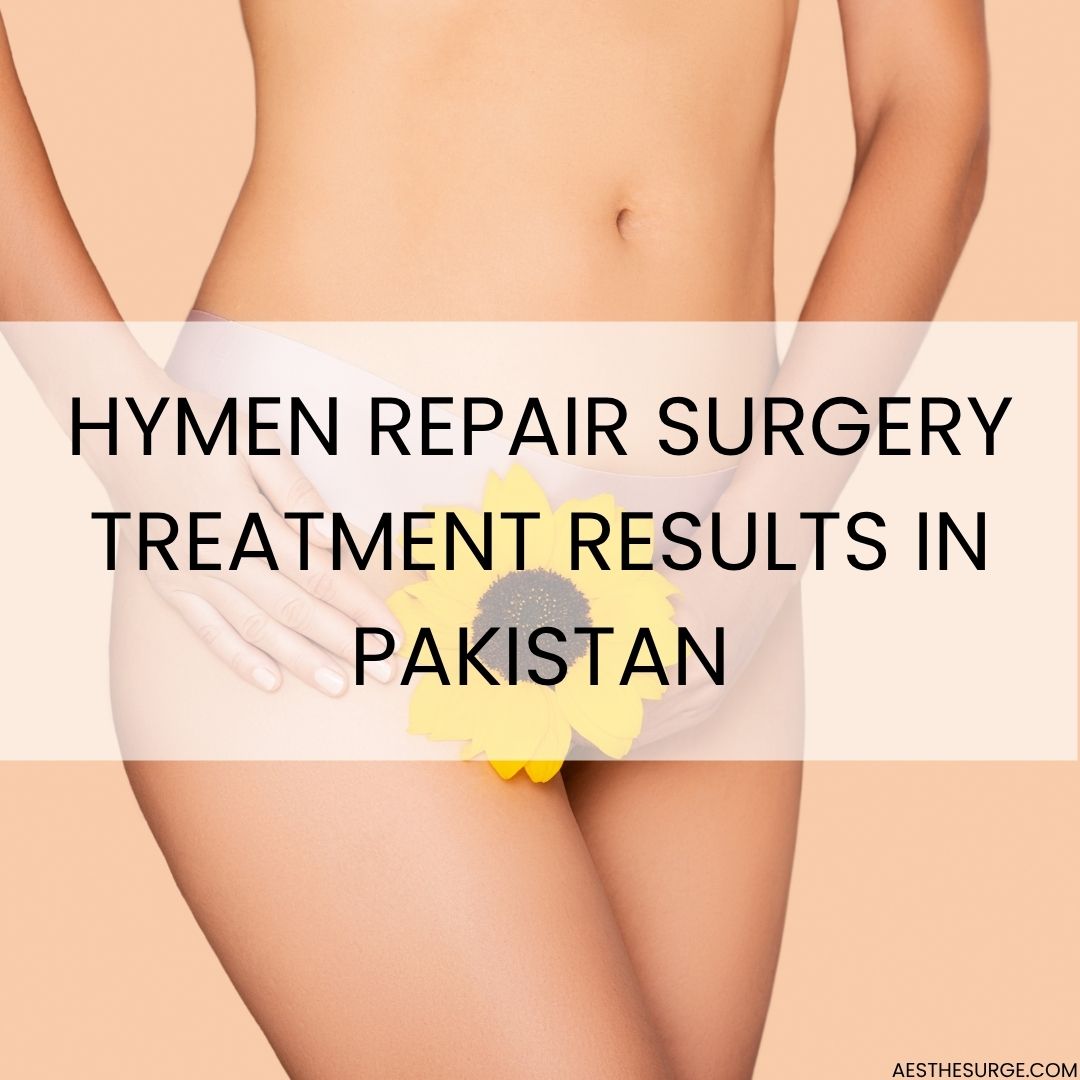
Hymen repair surgery, also known as hymenoplasty, is a minor surgical procedure that reconstructs the hymen—a thin membrane located at the vaginal opening. In Pakistan, this procedure is increasingly sought for personal, cultural, and social reasons. Whether you’re preparing for marriage or seeking restoration after trauma, this article provides a complete guide to the procedure, recovery, results, and more.
What Is Hymen Repair Surgery?
The hymen can tear due to various non-sexual or sexual reasons, such as sports, injury, or intercourse. Hymenoplasty involves carefully stitching the torn edges of the hymen to recreate a membrane that mimics the natural structure.
The procedure:
- Is performed under local or general anesthesia
- Takes approximately 1 to 2 hours
- Is conducted as an outpatient procedure, allowing same-day discharge
At Aesthedoc, highly trained aesthetic physicians and plastic surgeons in Pakistan use advanced techniques to ensure results that are both discreet and natural-looking.
Why Women Choose Hymen Repair in Pakistan
In many Pakistani communities, the hymen symbolizes virginity, leading some women to opt for hymenoplasty to align with societal or cultural expectations. Other reasons include:
- Avoiding pre-marital stigma
- Healing from sexual trauma or abuse
- Correcting congenital absence of hymenal tissue
Each woman’s decision is deeply personal. Clinics such as Aesthedoc prioritize confidentiality and emotional well-being, ensuring compassionate, private care.
How the Hymenoplasty Procedure Works
- Initial Consultation: The specialist reviews your health history, expectations, and goals.
- Surgical Process: The torn edges of the hymen are stitched. If the tissue is absent, a small artificial membrane may be created.
- Post-Procedure Care: Patients return home the same day. Dissolvable stitches typically fade within 2–3 weeks.
Post-Surgery Recovery and Aftercare
Proper aftercare is essential for healing and natural results:
- Avoid physical exertion or intense exercise for 2–4 weeks
- Maintain hygiene and follow aftercare instructions
- Abstain from intercourse for 6–8 weeks
Most women return to regular activities within 7 days, with full recovery by 6–8 weeks.
Results of Hymen Repair Surgery in Pakistan
Pakistan-based clinics like Aesthedoc report high levels of patient satisfaction. Expected outcomes include:
- Natural appearance and texture
- Minimal or no visible scarring
- High success rate with long-term results (until next rupture)
Note: The hymen does not regenerate after it breaks again.
How to Choose a Trusted Hymen Repair Surgery Clinic in Pakistan
Selecting a clinic with the right expertise ensures your safety, comfort, and desired outcome. Look for:
- Certified Aesthetic Physicians & Plastic Surgeons
- Strong privacy policies
- Sterile, modern surgical facilities
- Transparent pricing and consultation support
Clinics like Aesthedoc are committed to providing discreet, professional, and respectful care.
FAQs About Hymen Repair Surgery in Pakistan
Q1: Is hymenoplasty painful?
A1: The procedure is mostly painless due to local anesthesia. Some soreness may occur for a few days post-surgery.
Q2: Can the surgery be detected?
A2: No. The reconstructed hymen looks and feels natural. Even doctors cannot tell unless informed.
Q3: What is the cost of hymen repair in Pakistan?
A3: Prices range from PKR 50,000 to PKR 150,000, depending on the case and clinic.
Q4: Are there any side effects?
A4: Side effects are rare but may include mild swelling, discomfort, or infection—all manageable with standard care.
Q5: When can I get married after surgery?
A5: It’s best to wait 6–8 weeks post-surgery for full healing before marriage or sexual activity.
Confidential Hymenoplasty Services at Aesthedoc
At Aesthedoc, our team of qualified aesthetic physicians and plastic surgeons provides safe, private, and non-judgmental hymen repair services. We offer:
- Personalized consultations
- Modern surgical care
- Affordable, transparent packages
- Patient-centered support in a confidential environment
Final Thoughts
Hymenoplasty in Pakistan is a safe, effective, and confidential solution for women seeking restoration for cultural, emotional, or medical reasons. With experienced professionals at Aesthedoc, patients receive respectful care with the utmost privacy.
If you’re considering hymen repair surgery, book a confidential consultation today. Aesthedoc is here to support your journey—discreetly and professionally.
-

 Blog11 months ago
Blog11 months agoFace Lift in Islamabad
-
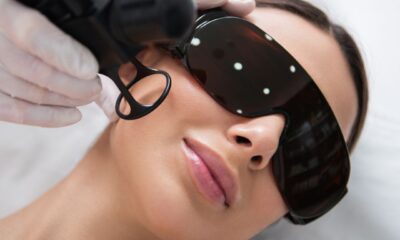
 Blog8 months ago
Blog8 months agoLaser Skin Tightening in Rawalpindi Islamabad Lahore
-
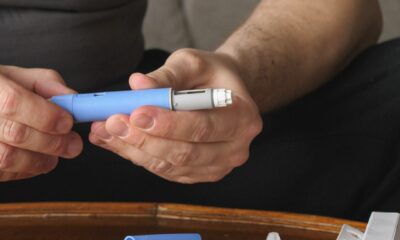
 Blog3 months ago
Blog3 months agoMounjaro Price in Pakistan
-
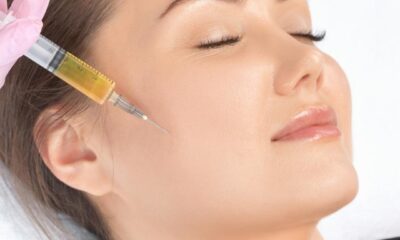
 Blog8 months ago
Blog8 months agoPRP Stem Cell Exosomes in Pakistan AestheSurge
-
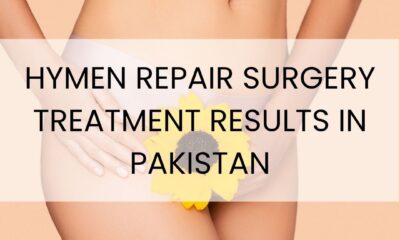
 Blog8 months ago
Blog8 months agoHymen Repair Surgery Treatment Results in Pakistan
-
Blog2 years ago
Weight Loss Injections, Saxenda Injection Treatment Price in Pakistan
-
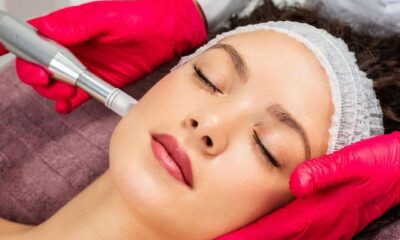
 Blog8 months ago
Blog8 months agoMicroneedling Treatment Cost in Pakistan AestheSurge
-
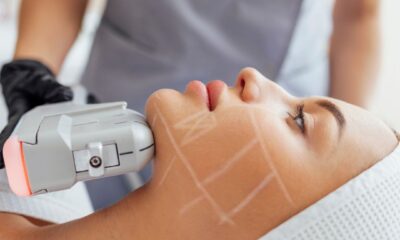
 Blog8 months ago
Blog8 months agoHIFU Treatment Cost in Pakistan
